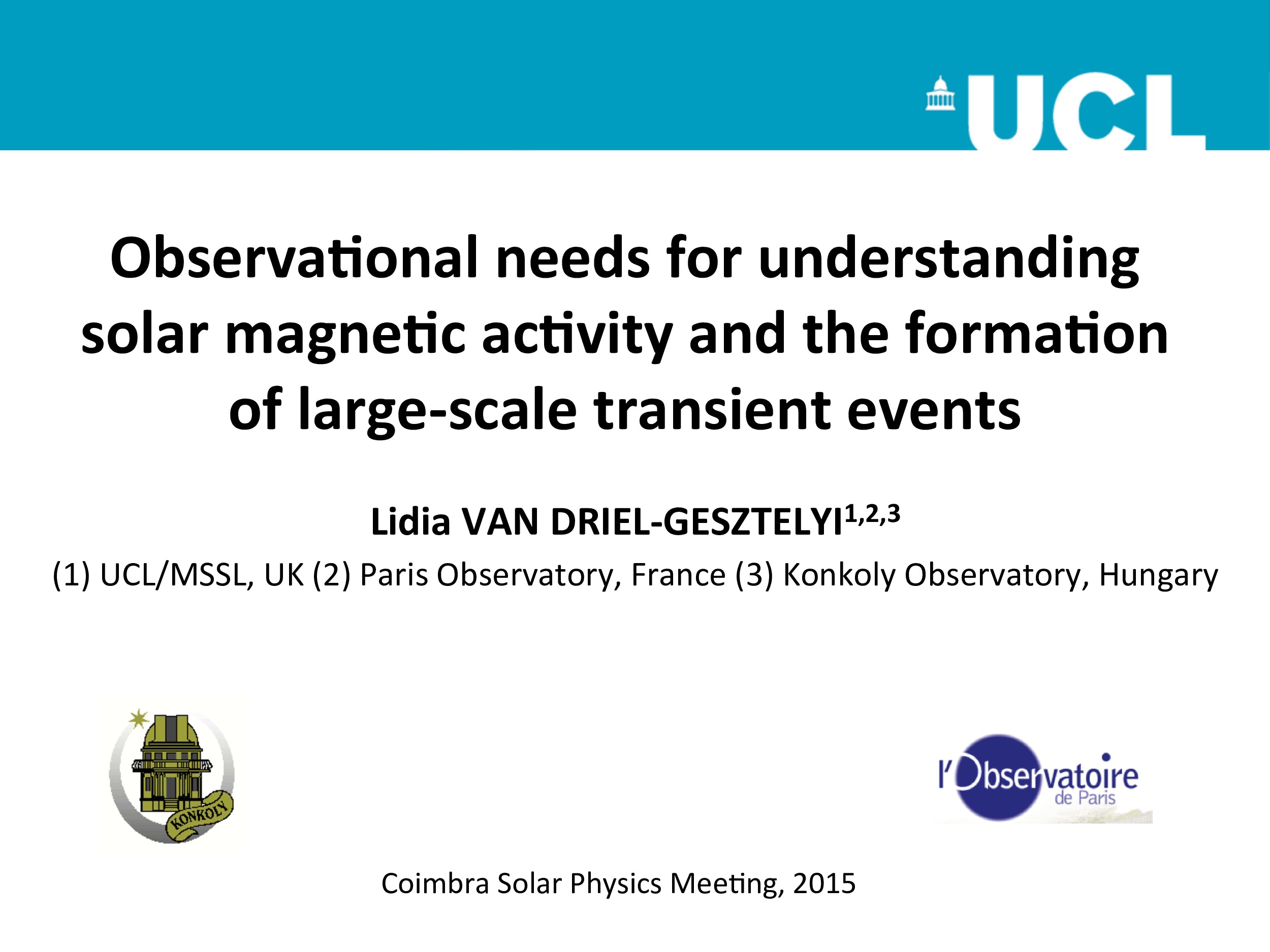Observational needs for understanding solar magnetic activity and the formation of large-scale transient events
Affiliation
(1) UCL/MSSL, UK (2) Paris Observatory, France (3) Konkoly Observatory, Hungary
Main category
Natural Sciences (Astrophysics and Astrononmy)
Abstract
The temperature in the solar atmosphere ranges over three orders of magnitude from the photosphere to the corona, which extends up to four during periods of transient activity. Consequently, the wavelengths we can observe certain details of large-scale transients, i.e. coronal mass ejections (CMEs) and related flares range over from radio, through optical to X-rays. Non-thermal effects further broaden the range. Large transients show signatures at most wavelengths, which in turn provide highly complementary information, necessary for a synthesis. To form an increasingly complete observational picture of CMEs, we need broad and ever-broadening multi-wavelength, multi-instrument observational coverage both from the ground and space. As the formation of CMEs involve long time-scales and only probabilistic predictions are available for their onset time, we need long synoptic sequences. Once the onset is imminent, the sequence of events accelerates and there is a need for high-cadence observations. Even in the low corona, CMEs couple small scales (e.g. flare in their source active region) and large scales (e.g. the extent of a Moreton or global EUV wave). Therefore we need high spatial resolution observations focused on the small-scale, but should we neglect its large-scale signatures and its interaction with surrounding magnetic fields, we will never fully understand a CME. As CMEs travel from the solar corona through the interplanetary space, they need to be tracked by coronagraphs, radio instruments adapted to the low-frequency plasma emission, and their magnetic fields and plasma measured in situ. I will give an overview of multi-wavelength CME signatures and emphasize the importance of magnetic field measurements in particular, necessary to make progress in understanding their formation.
Do you have problems viewing the pdf-file? Download presentation
here
If the presentation contains inappropriate content, please
report the presentation. You will be redirected to the landing page.
